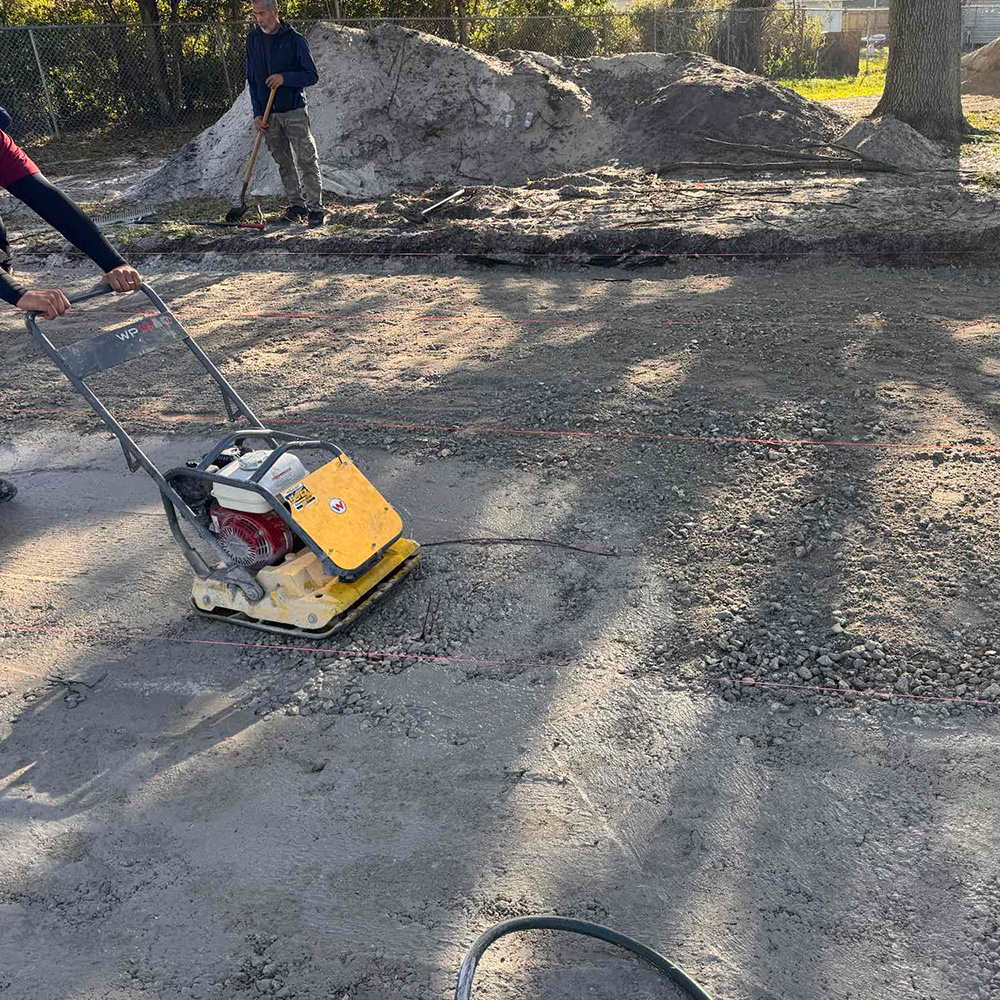How to Prepare the Ground for Rubber Playground Tiles
Related Product: Sterling Playground Tiles All Sizes
How to Prepare the Ground for Rubber Playground Tiles

Ground preparation is critical with the rubber playground tiles since the sub-surfaces need to drain away water from the playground surface properly. Additionally, when preparing ground for playground areas, you’ll want to consider the overall location, including whether the area is exposed to direct sunlight. Rubber absorbs heat from infrared light, so if direct sunlight reaches the area, consider buying a lighter-colored tile to help reflect the light and keep the heat of the tiles down.
How to Prepare the Pre-Subsurface
Remove the topsoil until a solid, packed, stable subsoil is visible and level.If your site is elevated and has natural drainage and doesn’t collect water, you can utilize its natural drainage properties.
If you are using a solid retainer border around the playground tiles, you will need to design the edges to let the water drain out.
How to Prep Ground for Playground Drainage
It’s essential to design a water collection system to keep the rubber tile surface level and keep the tiles out of standing water for long periods of time if the pre-subsurface doesn't drain.When working with a non-draining site that’s lower than the surrounding areas, you will need to install a sub-surface water management system. That system encompasses perforated PVC pipe installed beneath the subbase and then tied into the external stormwater collection system. The PVC needs to be surrounded with ¾-inch clear crushed stone.
How to Install Your Playground Subsurface
To create your subsurface, you will need to consider and establish the slope that you want in your finished playground. A 1% slope helps rainwater and snow melt to run off of the playground surface.You will need to structure the sub-surface to accommodate that slope. The subbase needs to be compacted and properly graded from the center of the site to the outside edge.
It’s recommended to use a solid subsurface, like concrete, for its overall stability.
In some cases, you may be able to use an aggregate sub-base consisting of 4 to 8 inches of granular packing aggregate. That base needs to be rolled, packed, soaked with water, and possibly even supplemented with cement to create the firm base necessary to support the playground long-term.
Can You Install Rubber Playground Tiles Yourself?

The ground preparation process is extensive when building a playground from scratch; the instructions above are very abbreviated and leave out many detailed steps. There are multiple phases to the ground preparation, and every layer needs to be correctly prepared for a successful rubber tile installation. We do not recommend customers perform the playground site preparation and install the tiles themselves.
There are several reasons why. The site preparation requires specialized heavy equipment that many customers don’t have access to. Additionally, preparing layers, especially the pre-sub-surface and sub-surface, requires knowledge and experience. Mistakes made in the site preparation phase can result in issues with the playground surface, potentially requiring you to redo the entire playground. These types of errors are expensive and frustrating.
Steps to a Successful Playground Installation
Understanding how to prepare the ground for a playground is key, so before an installation, take the time to fully read the installation and site preparation instructions provided by your tile manufacturer.This is also the time to find a professional contractor experienced in these types of projects. Share your goals for the project, as well as the type of tile that you’re using, and the site preparation instructions with the contractor. Ask specifically about their experience with such projects, the kind of equipment they have access to, and whether they can fully follow the ground preparation instructions. Don’t forget to ask for references and then contact the references to find out about previous experiences working with the contractor.
When you work with a contractor, your playground project may take more time and it may initially cost more than if you performed the installation yourself. However, professional contractors can also save you money in the long run by helping to prevent expensive mistakes that negatively impact your playground.






